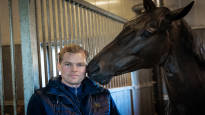On Friday, the Ministry of Education and Culture (OKM) awarded grants totaling 1.5 million euros to Finnish athletes. This year, 20 athletes received the largest grant of 20,000 euros.
This year, the emphasis is understandably on the Olympic and Paralympic athletes when they compete in Paris between July and September.
Young athletes also received more grants this year than before. Young athletes are considered to be those aged 16–25. OKM chief inspector Kari Niemi-Nikkola says that the ministry wants to invest in the future of young athletes.
– This much-talked-about age stage, when athletes finish secondary education – and move on to their own lives anyway – is the one where our support systems are at their thinnest.
– That is, when an athlete really has to decide whether he wants to be a top athlete. Then there are relatively few of those support mechanisms. This is one way to signal that you should start a career as a professional athlete. At the same time, the young people also receive a little financial support, says Niemi-Nikkola.
Why does an athlete go without a scholarship?
Among other things, a number of riders were exhausted from the list of athletes who received scholarships. Dressage rider Katja Karjalainen received 10,000 euros and a field rider Veera Manninen 6,000 euros.
School riders, for example, were left without a grant Emma Kanerva and field rider Sanna Siltakorpi. Inspector General Niemi-Nikkola cannot specify individually why an athlete is left without a grant. There are many reasons behind it.
– Some of the athletes do not apply for a grant. Second, the athlete-specific criteria are reviewed separately for each athlete and they (the criteria) are mirrored to the criteria announced in the application notice.
– Is the athlete at medal level, does he have a realistic chance of ranking in the top 16 in the world in his sport? Or is he a young athlete, for whom the criteria are a little looser. There are basics for everyone, depending on the athlete, says Niemi-Nikkola.
According to him, it can also have an effect if the athlete’s circumstances change very decisively, i.e. for example, the athlete’s horse is injured or he is missing a sailboat.
– However, it is a speculative matter. It is really difficult for us to take a position on that and assess whether the athlete has a chance to get, for example, a horse, for the next competition season. Therefore, the results of each athlete are the ones that are primarily looked at.
A tennis player Otto Virtanen has received a grant in the previous two years, but was left without support this year. Niemi-Nikkola does not comment on Virtanen’s situation individually either.
According to the inspector general, tennis is one of those sports where financial opportunities change substantially when an athlete moves to professional courts. Another such sport is, for example, car racing.
– We carefully go through all these athletes to see what their situation is and what their possibilities are.
Henri Ruoste did not apply for a grant
Dressage rider Henry Ruoste has received a grant of 10,000 euros in 2022 and 2023. He tells Urheilu that he did not apply for a grant for this year.
– There was no more wonderful reason for that. There were those income limit things. I also didn’t get to compete so much last season that those criteria would have been met. Hopefully this season they will be filled and things will be better in terms of sports than last year, Ruoste says.
Ruoste competed three times last season. Among other things, it was influenced by the fact that his best horse is still not in a condition to train.
The horse Kontestro Db has been out of training due to his health. In July 2022, a lump appeared on the left side of Kontestro’s neck, which eventually developed into a vasculitis that led to a venous blockage. In all probability, the horse has received some kind of injection in the guest stable in Aachen, Germany.
– So far, nothing has been resolved. The neck is such a difficult area to examine with so many nerves and stuff. It could be that a blocked or swollen vein is pressing on the nerve. It then causes discomfort when you should do sports. We haven’t practiced. The sport is not successful, but otherwise the horse is doing very well, Ruoste explains.
Read also: Henri Ruoste owned a horse worth millions of euros – one night the animal was mysteriously injured, and no one still knows what happened
With the income limit, Ruoste refers to the fact that the grant is not awarded to athletes whose taxable income exceeds 80,000 euros in the most recently confirmed taxation, or whose financial position is otherwise sufficiently secured.
– I can say that the income limit was not a limiting factor for any recipient, Chief Inspector Niemi-Nikkola says.
